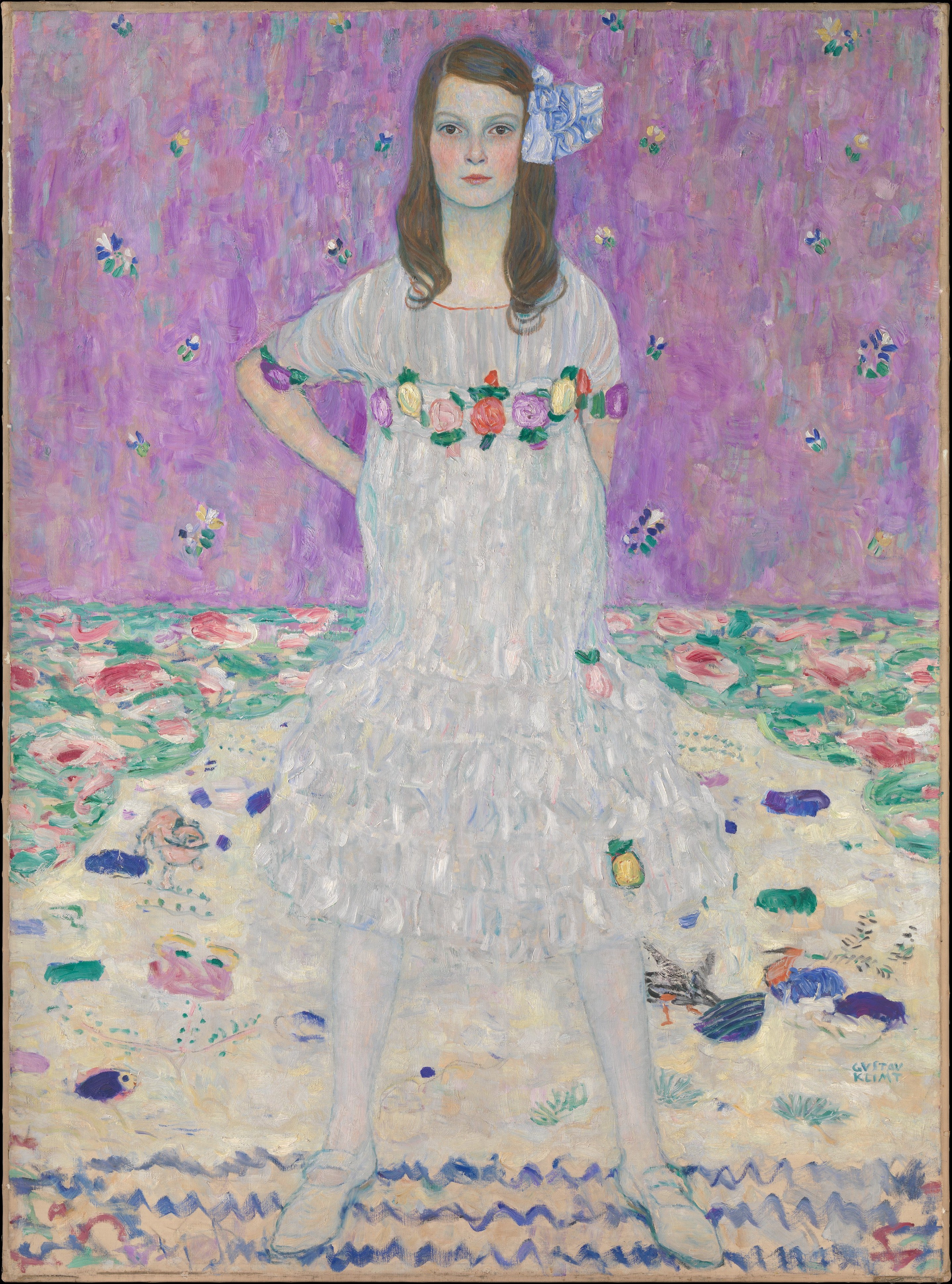
Mäda Primavesi (1903–2000)
With her upright posture, direct gaze, and unmistakable self-assurance, Mäda Primavesi presents a striking presence for a girl of just nine years old. Described by herself as willful and something of a tomboy, Mäda meets the viewer with a poised, almost commanding expression—one that defies the conventions of childhood portraiture and reflects the strong personality Klimt sought to capture. The artist made numerous preparatory sketches in advance of the painting, exploring different arrangements of pose, costume, and setting before arriving at this luminous final composition: Mäda standing proudly in a specially tailored white dress, set against a rich tapestry of springlike floral patterns.
The portrait is not only a psychological study of the young sitter, but also a statement of aesthetic refinement and modern sensibility. Her parents, Otto and Eugenia Primavesi, were prominent figures in Viennese society—patrons of progressive art and design, deeply embedded in the world of the Vienna Secession, of which Gustav Klimt was a leading light. Their cultivated taste is evident not only in the commission of this portrait, but also in their broader support of avant-garde artists and architects. So close was their relationship with Klimt that he would soon go on to paint Eugenia’s portrait as well, now housed in the Toyota Municipal Museum of Art, Japan.
But this artwork carries more than just personal and artistic resonance—it also bears the marks of a turbulent history. In 1938, as Nazi authorities seized control in Austria, the painting was confiscated from its then-owner, Jenny Pulitzer Steiner, as part of the widespread expropriation of Jewish property. It was not until 1951 that the work was restituted to Steiner, a delayed act of justice that reflects the ongoing legacy of cultural theft during the Holocaust.
Today, Portrait of Mäda Primavesi stands not only as a dazzling example of Klimt’s late portraiture—rich in color, texture, and psychological depth—but also as a powerful reminder of art’s entwinement with personal identity, family legacy, and the enduring complexities of history.
Choose options


Mäda Primavesi (1903–2000)
